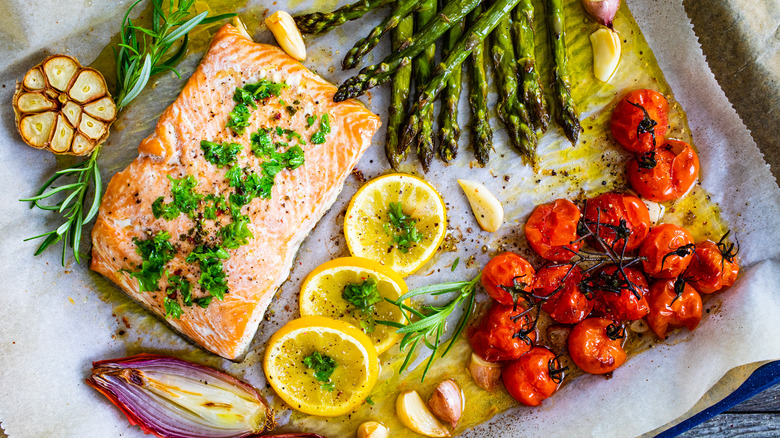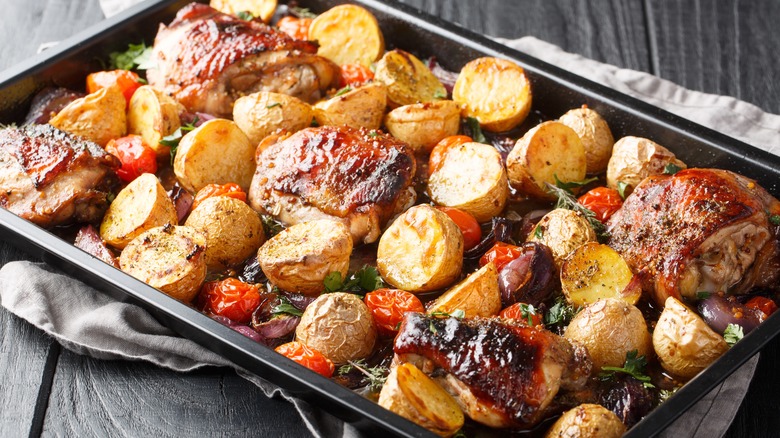The Key To A Successful Sheet Pan Meal Is Cooking In Stages
Cooking can be as complicated or simple as you make it. Some projects like beef Wellington require hours of preparation and a list of tips you need to master the recipe, whereas a weeknight spaghetti involves little more than boiling water and opening a jar of pasta sauce. While sheet pan dinners are usually advertised as simple and easy, there are plenty of mistakes you can make, from forgetting to preheat the oven to getting food stuck to the pan. Timing is arguably the most important factor when cooking everything together on a single sheet, which is why the key to success is cooking in stages. Approach the ingredients and their cook times as a math equation you have to complete, but this particular problem has a delicious, satisfying reward at the end.
It's important to consider the density and size of the ingredients as those are a direct correlation of how quickly they'll cook, and will aid in deciding what to add in which stage. Root vegetables, such as carrots and sweet potatoes, cook at about the same rate and need more time in the oven, while fragile, more tender vegetables like asparagus or snap peas cook quickly — so be sure to add those toward the end of the cooking time. Recipes with pre-cooked proteins and delicate vegetables, like this chicken sausage and asparagus sheet pan dinner, can be cooked in one stage as there are no dense, raw proteins to cook nor any hearty vegetables. But this isn't always the case.
Know the cook times of each ingredient
A large, raw protein like pork loin should be added much earlier than an already cooked or smaller protein, like cubed tofu that only needs to be crisped. Keep in mind that bone-in proteins will take longer to cook than those without bones: Bone-in, skin-on chicken thighs need about 35 minutes to fully cook, while boneless, skinless chicken thighs only require about 20 minutes. Defrosted, peeled shrimp cook in just a few minutes, so make sure to add shrimp just at the very last stage if you're cooking them alongside a cruciferous vegetable like broccoli, which needs more time in the oven. Sauces with any added sweetener or acid, like honey or vinegar, should be added at the very end of cooking so they don't burn in the hot oven.
Along with cooking in stages, another key to successful sheet pan meals is not overcrowding the pan. Giving the ingredients a little wiggle room by not piling them right on top of one another gives the food a chance to brown and crisp nicely, as opposed to steaming and becoming soggy. If you happen to overestimate the timing of a certain ingredient, like a filet of fish, you can always pull it off the sheet pan and set it aside on a plate while the remaining ingredients finish cooking.

